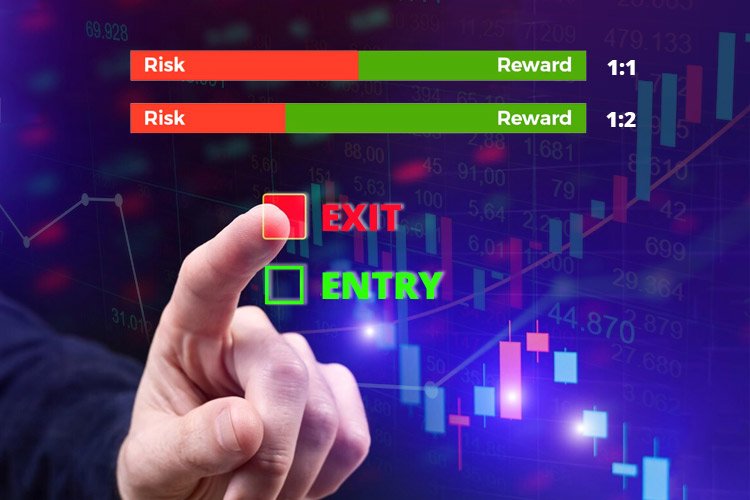Risk to reward ratio is one of those factors where just a small adjustment can lead to immediate improvement.
In this lesson, we will explain the concepts of net profit and risk/reward ratio and how they relate to each other.
Discover Giant Hunter AI
Net profit
Net profit is the total profit from trades after losses are deducted.
You can change your net profit by working with these two factors:
1. percentage of profitable trades out of all orders
2. average risk/reward ratio.
Concentrate on your main strategy, the reason you enter trades, if you want to increase the percentage of profitable trades.
We won’t cover the first factor today, since it’s not related to the course topic. Let’s focus on the second factor as part of your risk management strategy.
If you adjust your risk/reward ratio, your net profit can increase regardless of your percentage of profitable trades.

Risk-to-reward ratio
To calculate the risk/reward ratio, divide the potential loss by the potential profit.
The potential loss comes from order closure by stop logs, and the potential profit comes from order closure by take profit.
For example, if you set your stop loss at 40 pips from the entry point and your take profit at 80 pips, you’ll have a 1:2 risk/reward ratio.
A risk-to-reward ratio’s impact on profits
Here’s an example from Mr. Riskman’s trading activity showing how the risk/reward ratio affects net profit.
Your take profit should be bigger than your stop loss to ensure a balanced risk-to-reward ratio. That’s how you can make steady profits from several trades.
Assessing risk to reward ratio before trading
Your expectations don’t solely determine the risk/reward ratio. Two factors must align for it to work:
1. The ratio should fit your strategy.
2. It has to be realistic and based on the current market conditions.
One way to analyze the market conditions is to use support and resistance levels. Let’s look at the case study example below.
Recommendations
When setting the risk-to-reward ratio, don’t just rely on your expectations and trading statistics but also consider the market analysis.
By avoiding trades with a risk-to-reward ratio that doesn’t match your strategy, you minimize potential losses.
Summary
1. Net profit is the total profit from trades after losses are deducted. It depends on the percentage of profitable trades and the risk-to-reward ratio.
2. The risk/reward ratio determines how much risk you are willing to take to achieve a certain profit level. To calculate it, divide the stop-loss distance (potential loss) by the take-profit distance (potential profit).
Test different risk/reward ratios to find the one that brings you the most net profit.






